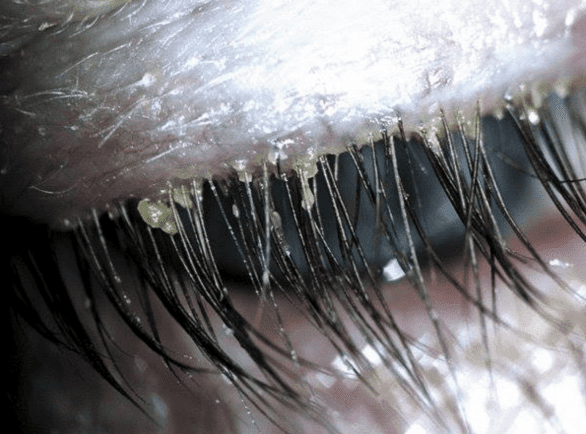
Warning: two species of microscopic mites eat, sleep, crawl and reproduce on your face.
Before you get too grossed out, Demodex mites are not actually harmful to you. They sound nasty (by thriving on the oils produced by your body and burying into your hair follicles), but they also eat the dirt and oils that clogs your pores.
Identifying the mites
Demodex folliculorum and Demodex brevis are typically too small to see with the human eye. Their semi-transparent, elongated bodies are 0.3 to 0.4 millimeters long with a head and eight stubby legs on one end.
When you might get them
Demodex mites are rarely found on babies. Research suggests the likelihood of hosting Demodex mites increases as we age. According to National Geographic, 70 to 100 percent of teens and adults show evidence of hosting these miniscule parasites. The most common age range is 20 to 30 years old, but chances are, everyone you know has them.
How they spread
The microscopic parasites are spread around by pets and people. Mite transfer happens through contact of hair, eyebrows and glands on the nose.
Although makeup is not the cause of an eyelash mite infestation, it can certainly increase the chances of getting one. Makeup provides a layer for the mites to get stuck in, and makes it the perfect nesting ground to produce offspring in.
Norman Herskovich, an optometrist at Elite Family Eye Care, said the mites are most active when people sleep because they try to avoid light.
"As awkward as this sounds, when we go to bed at night they come out and they mate, and they will actually reproduce," Herskovich said. "They have a two to three-week cycle and will eventually die, but their offspring will continue the process."
No need to worry, unless ...
These mites can live on your face without causing any harm for years, so there's no need to worry. It's a natural part of our ecosystem. However, a heavy buildup or infestation can cause eye irritation and inflammation called Demodicosis. Demodicosis is not part of the natural process and symptoms include infection, dry eyes and eyelash loss. Demodex mites have even been linked as a causation of rosacea. If you experience these symptoms, seek home-remedy treatments or visit your optometrist.
Treatment
If you think you are experiencing Demodicosis or simply thinking about having living organisms on your face makes you sick, here are several steps you can take to get rid of Demodex:
-
Use tea tree oil wipes on your eyes, morning and night.
-
Remove makeup thoroughly every night before sleeping.
-
Use a no-tear baby soap to wash your face twice a day.
-
Clean your sheets and pillows often.
-
Purchase new eye makeup and discard the old products in case of contamination.
-
Have your spouse and animals checked for mites.
-
If problems persist, seek a thorough cleaning from your eye doctor. The procedure takes about 20 minutes.
Because these mites are common and usually harmless, try not to lay away at night thinking about the things living on your face.

